Abstract
Tumour-bearing mice produce circulating serum factors that block cell-mediated immunological reactions in vitro. The mechanism by which these specific suppressor factors (SF) block leucocyte adherence inhibition (LAI) was studied. It had previously been shown that the antigen-reactive effector cells in the LAI assay are Ly-1+ T cells. We have now found that Ly-2+, I-J+ cells are required in the reactive cell population to observe the blocking action of SF from serum. Tumour-bearer spleen cells (containing Ly-2+, I-J+ lymphocytes) reacted only with the specific tumour-related serum factor (SF1) and relevant tumour antigen, to produce a non-specific suppressor factor (SF2). Specificity studies were conducted with contact-sensitized mice: hapten-specific spleen cells reacted only with hapten-related SF1 and the relevant hapten, to produce a similar SF2. SF2 differed from SF1 in suppressing allogeneic as well as syngeneic cells, in suppressing populations depleted of Ly-2+, I-J+ cells, and in being unaffected by absorption with immobilized anti-I-J antibody. Gel-filtration of SF2 revealed two forms of differing MW (greater than 190,000 and 20,000-50,000).
Full text
PDF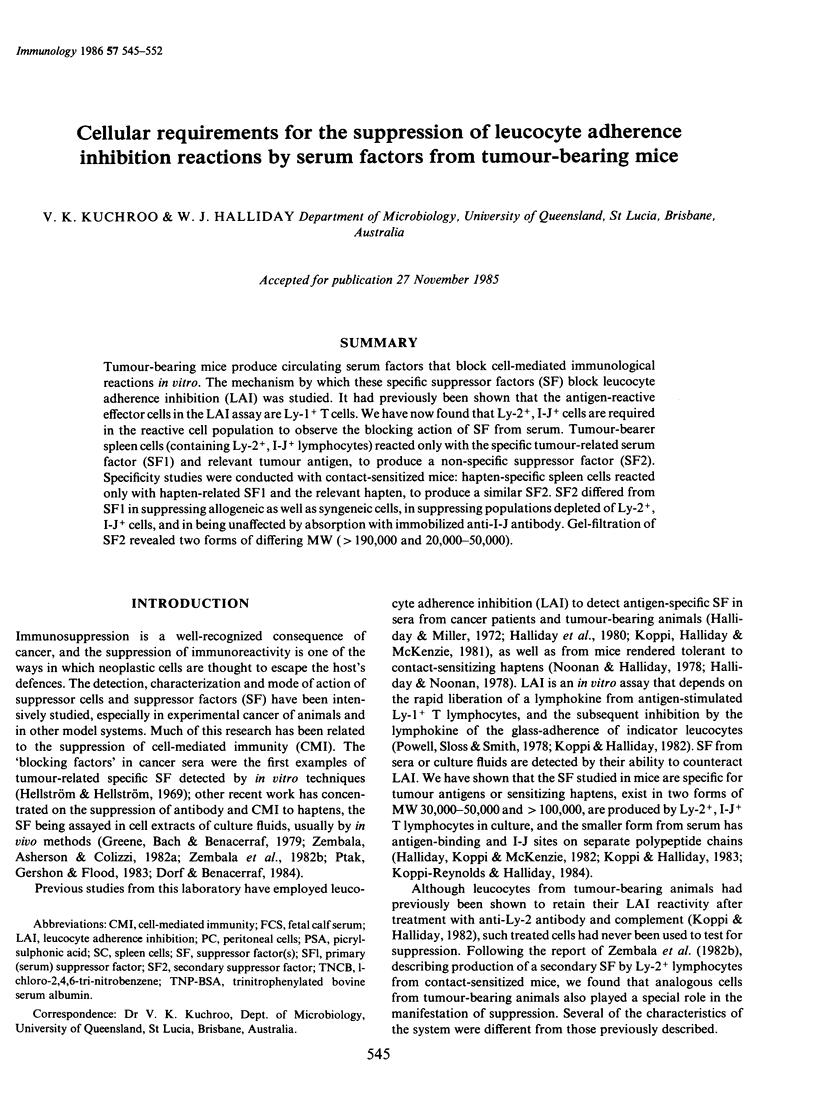
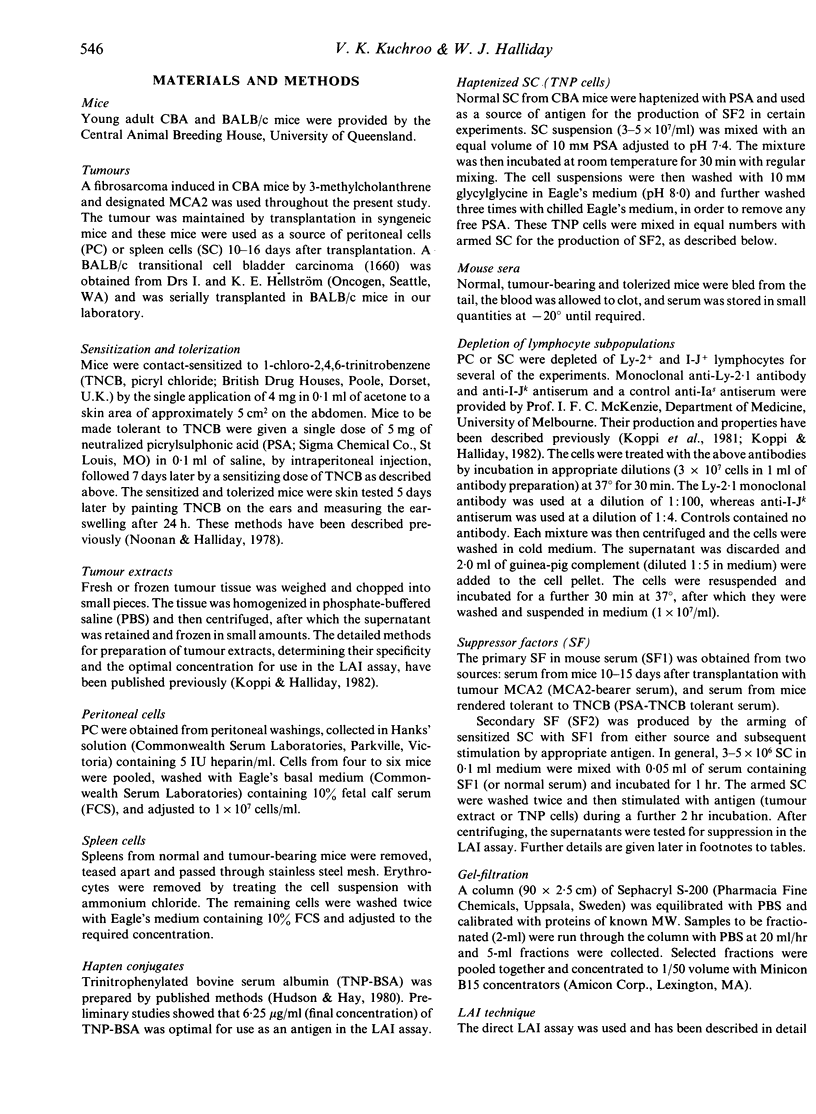
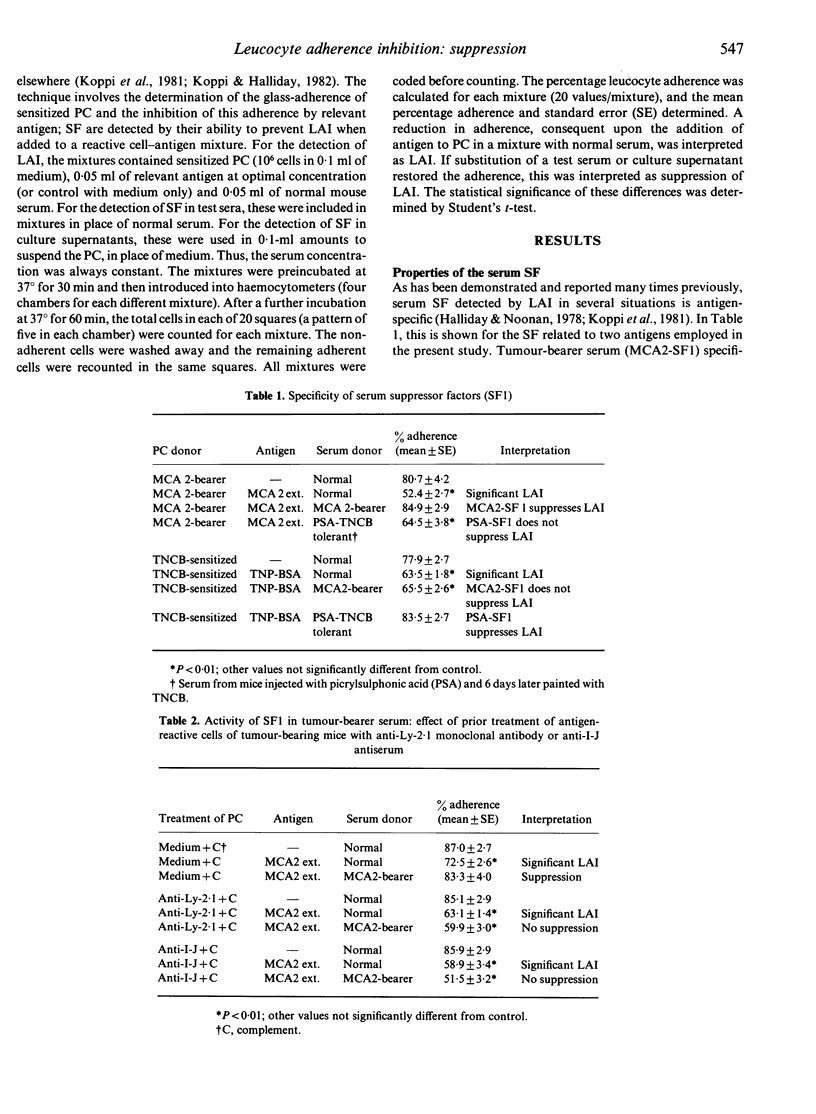
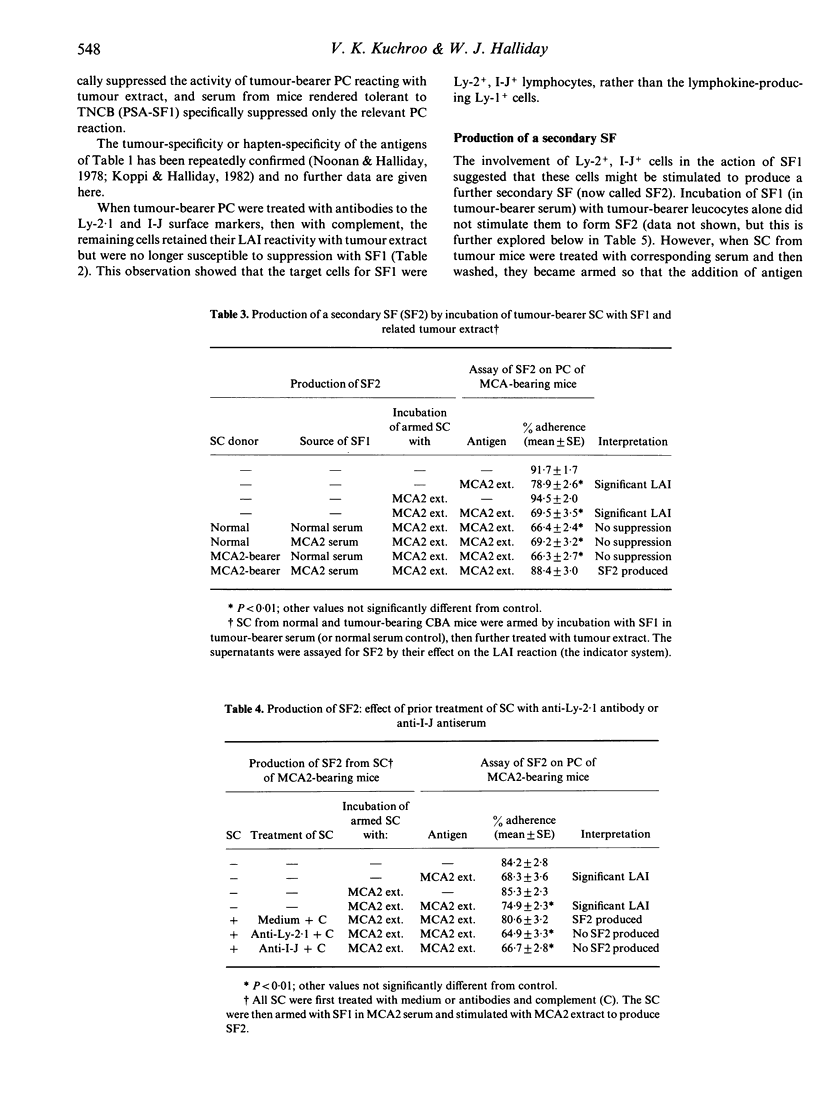
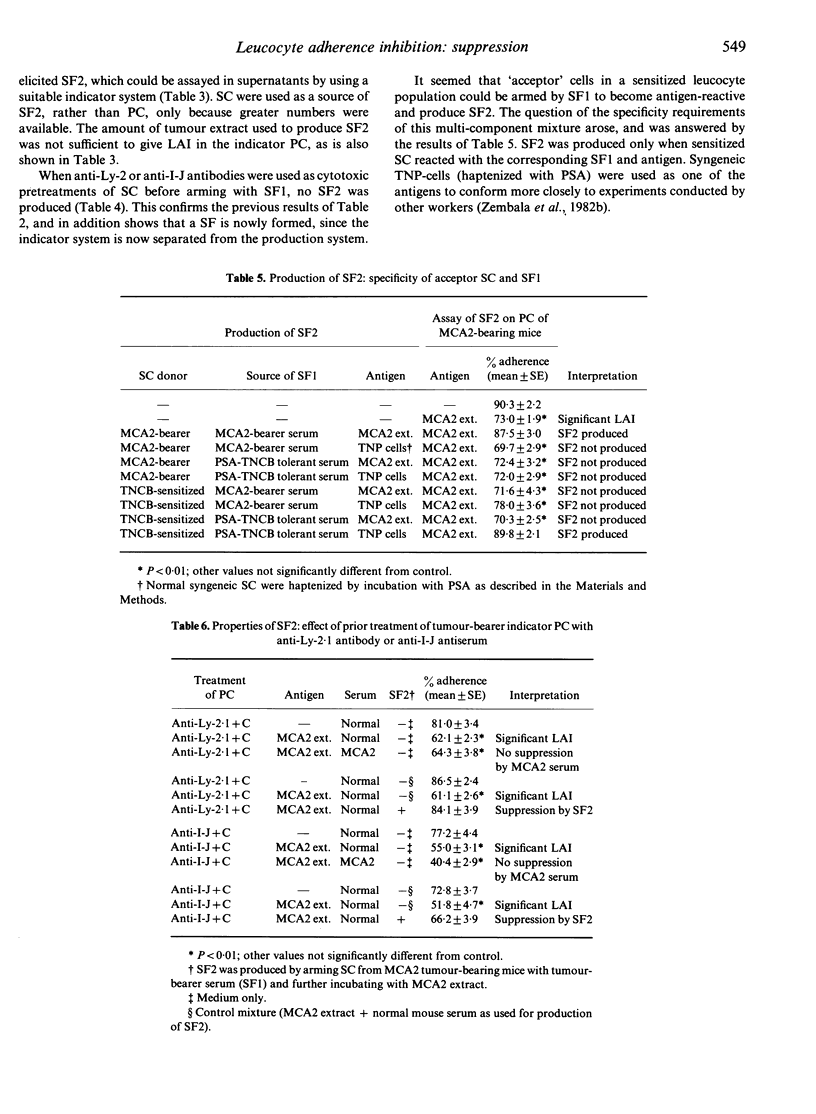
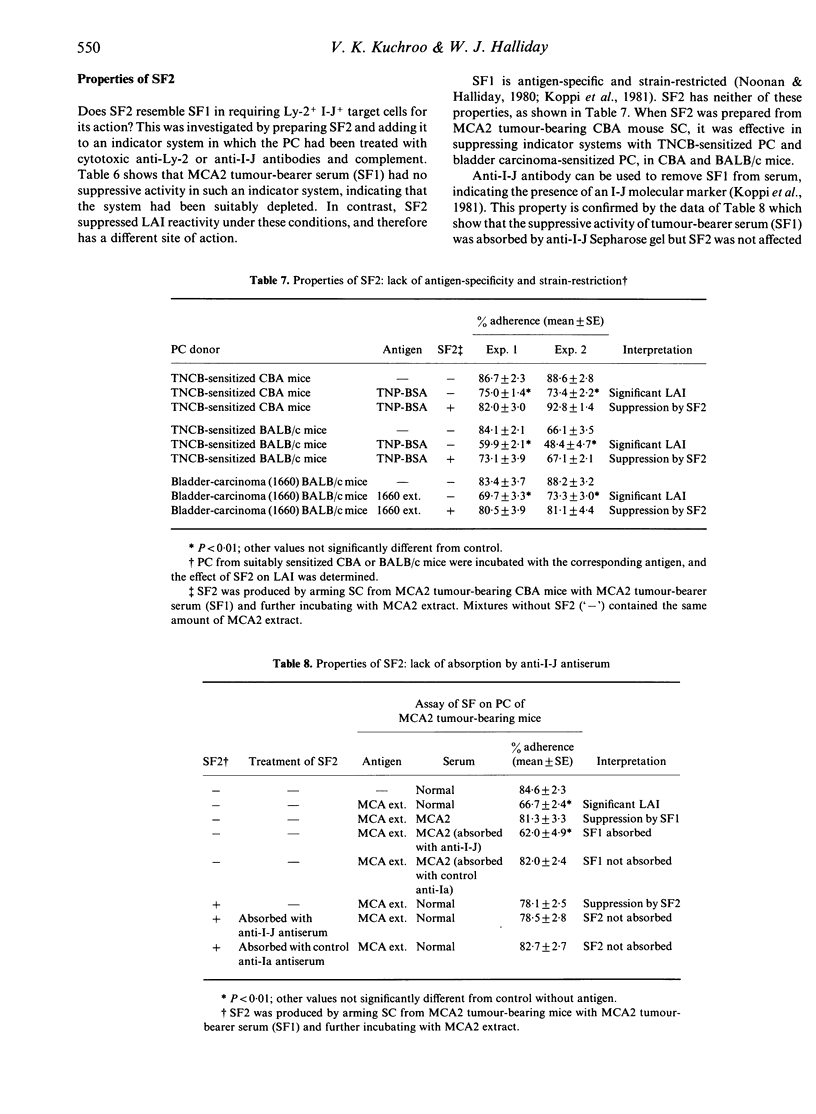
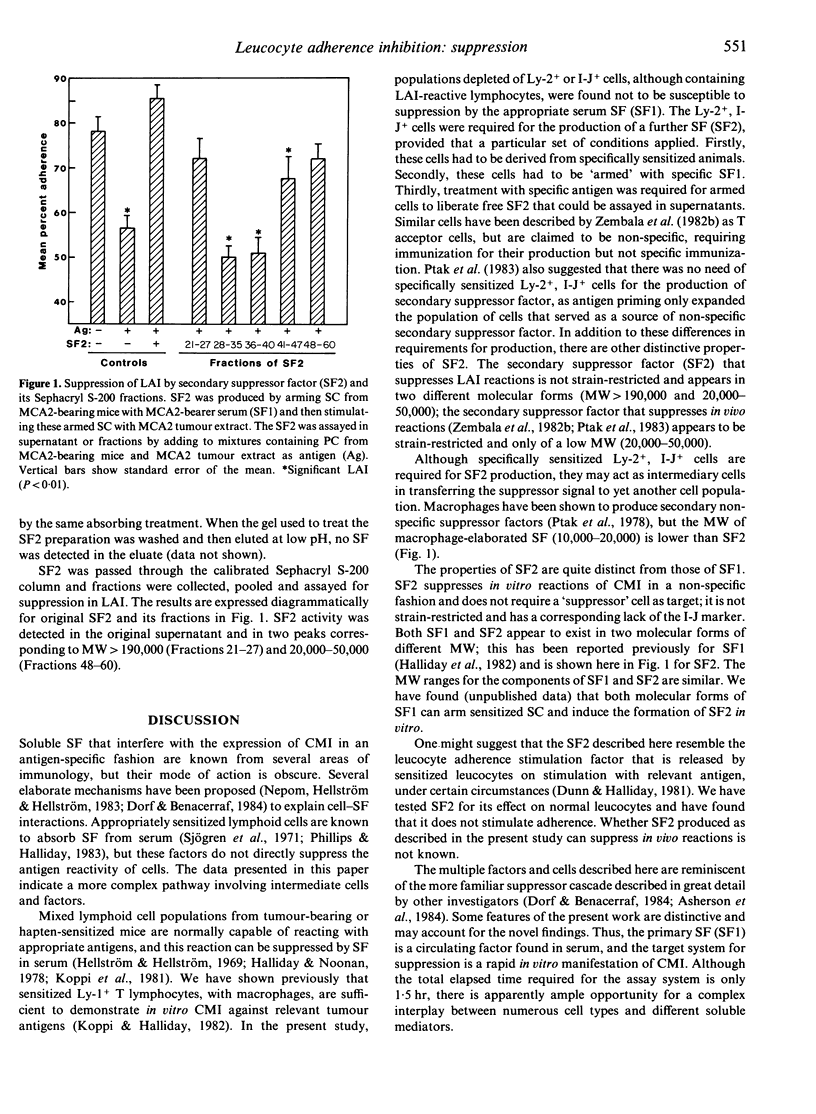
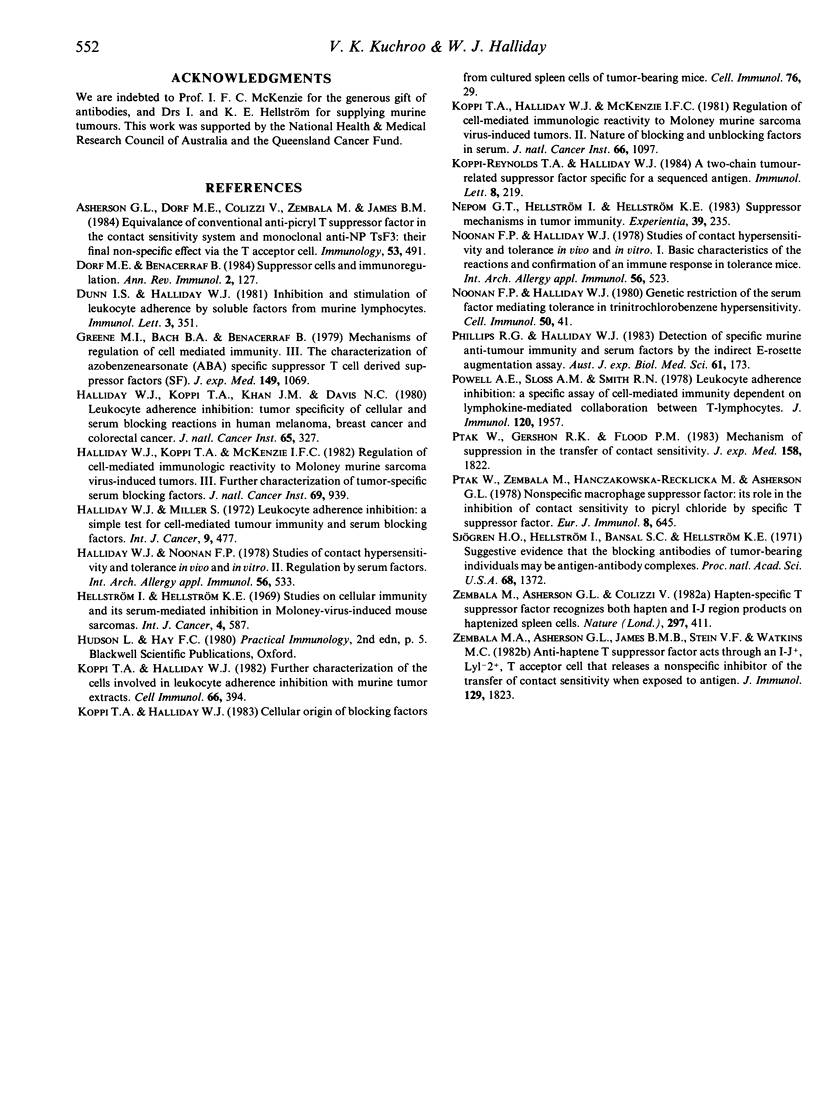
Selected References
These references are in PubMed. This may not be the complete list of references from this article.
- Asherson G. L., Dorf M. E., Colizzi V., Zembala M., James B. M. Equivalence of conventional anti-picryl T suppressor factor in the contact sensitivity system and monoclonal anti-NP TsF3: their final non-specific effect via the T acceptor cell. Immunology. 1984 Nov;53(3):491–497. [PMC free article] [PubMed] [Google Scholar]
- Dorf M. E., Benacerraf B. Suppressor cells and immunoregulation. Annu Rev Immunol. 1984;2:127–157. doi: 10.1146/annurev.iy.02.040184.001015. [DOI] [PubMed] [Google Scholar]
- Dunn I. S., Halliday W. J. Inhibition and stimulation of leukocyte adherence by soluble factors from murine lymphocytes. Immunol Lett. 1981 Dec;3(6):351–356. doi: 10.1016/0165-2478(81)90066-3. [DOI] [PubMed] [Google Scholar]
- Greene M. I., Bach B. A., Benacerraf B. Mechanisms of regulation of cell-mediated immunity. III. The characterization of azobenzenearsonate-specific suppressor T-cell-derived-suppressor factors. J Exp Med. 1979 May 1;149(5):1069–1083. doi: 10.1084/jem.149.5.1069. [DOI] [PMC free article] [PubMed] [Google Scholar]
- Halliday W. J., Koppi T. A., Khan J. M., Davis N. C. Leukocyte adherence inhibition: tumor specificity of cellular and serum-blocking reactions in human melanoma, breast cancer, and colorectal cancer. J Natl Cancer Inst. 1980 Aug;65(2):327–335. [PubMed] [Google Scholar]
- Halliday W. J., Koppi T. A., McKenzie I. F. Regulation of cell-mediated immunologic reactivity to Moloney Murine sarcoma virus-induced tumors. III. Further characterization of tumor-specific serum blocking factors. J Natl Cancer Inst. 1982 Oct;69(4):939–944. [PubMed] [Google Scholar]
- Halliday W. J., Miller S. Leukocyte adherence inhibition: a simple test for cell-mediated tumour immunity and serum blocking factors. Int J Cancer. 1972 May 15;9(3):477–483. doi: 10.1002/ijc.2910090304. [DOI] [PubMed] [Google Scholar]
- Hellström I., Hellström K. E. Studies on cellular immunity and its serum mediated inhibition in Moloney-virus-induced mouse sarcomas. Int J Cancer. 1969 Sep 15;4(5):587–600. doi: 10.1002/ijc.2910040503. [DOI] [PubMed] [Google Scholar]
- Koppi-Reynolds T. A., Halliday W. J. A two-chain tumour-related suppressor factor specific for a sequence antigen. Immunol Lett. 1984;8(4):219–225. doi: 10.1016/0165-2478(84)90082-8. [DOI] [PubMed] [Google Scholar]
- Koppi T. A., Halliday W. J. Cellular origin of blocking factors from cultured spleen cells of tumor-bearing mice. Cell Immunol. 1983 Feb 15;76(1):29–38. doi: 10.1016/0008-8749(83)90345-3. [DOI] [PubMed] [Google Scholar]
- Koppi T. A., Halliday W. J. Further characterization of the cells involved in leukocyte adherence inhibition with murine tumor extracts. Cell Immunol. 1982 Jan 15;66(2):394–406. doi: 10.1016/0008-8749(82)90189-7. [DOI] [PubMed] [Google Scholar]
- Koppi T. A., Halliday W. J., McKenzie I. F. Regulation of cell-mediated immunologic reactivity to Moloney murine sarcoma virus-induced tumors. II. Nature of blocking and unblocking factors in serum. J Natl Cancer Inst. 1981 Jun;66(6):1097–1102. doi: 10.1093/jnci/66.6.1097. [DOI] [PubMed] [Google Scholar]
- Nepom G. T., Hellström I., Hellström K. E. Suppressor mechanisms in tumor immunity. Experientia. 1983 Mar 15;39(3):235–242. doi: 10.1007/BF01955286. [DOI] [PubMed] [Google Scholar]
- Noonan F. P., Halliday W. J. Genetic restriction of the serum factor mediating tolerance in trinitrochlorobenzene hypersensitivity. Cell Immunol. 1980 Mar 1;50(1):41–47. doi: 10.1016/0008-8749(80)90004-0. [DOI] [PubMed] [Google Scholar]
- Noonan F. P., Halliday W. J. Studies of contact hypersensitivity and tolerance in vivo and in vitro. I. Basic characteristics of the reactions and confirmation of an immune response in tolerant mice. Int Arch Allergy Appl Immunol. 1978;56(6):523–532. [PubMed] [Google Scholar]
- Phillips R. G., Halliday W. J. Detection of specific murine anti-tumour immunity and serum factors by the indirect E-rosette augmentation assay. Aust J Exp Biol Med Sci. 1983 Apr;61(Pt 2):173–180. doi: 10.1038/icb.1983.15. [DOI] [PubMed] [Google Scholar]
- Powell A. E., Sloss A. M., Smith R. N. Leukocyte-adherence inhibition: a specific assay of cell-mediated immunity dependent on lymphokine-mediated collaboration between T lymphocytes. J Immunol. 1978 Jun;120(6):1957–1966. [PubMed] [Google Scholar]
- Ptak W., Gershon R. K., Flood P. M. Mechanisms of suppression in the transfer of contact sensitivity. Analysis of an I-J+ molecule required for Ly2 suppressor cell activity. J Exp Med. 1983 Dec 1;158(6):1822–1835. doi: 10.1084/jem.158.6.1822. [DOI] [PMC free article] [PubMed] [Google Scholar]
- Ptak W., Zembala M., Hanczakowski-Rewicka M., Asherson G. L. Nonspecific macrophage suppressor factor: its role in the inhibition of contact sensitivity to picryl chloride by specific T suppressor factor. Eur J Immunol. 1978 Sep;8(9):645–649. doi: 10.1002/eji.1830080908. [DOI] [PubMed] [Google Scholar]
- Sjögren H. O., Hellström I., Bansal S. C., Hellström K. E. Suggestive evidence that the "blocking antibodies" of tumor-bearing individuals may be antigen--antibody complexes. Proc Natl Acad Sci U S A. 1971 Jun;68(6):1372–1375. doi: 10.1073/pnas.68.6.1372. [DOI] [PMC free article] [PubMed] [Google Scholar]
- Zembala M. A., Asherson G. L., James B. M., Stein V. E., Watkins M. C. Anti-haptene T suppressor factor acts through an I-J+, Ly1-2+, T acceptor cell that releases a nonspecific inhibitor of the transfer of contact sensitivity when exposed to antigen. J Immunol. 1982 Nov;129(5):1823–1829. [PubMed] [Google Scholar]
- Zembala M., Asherson G. L., Colizzi V. Hapten-specific T suppressor factor recognizes both hapten and I-J region products on haptenized spleen cells. Nature. 1982 Jun 3;297(5865):411–413. doi: 10.1038/297411a0. [DOI] [PubMed] [Google Scholar]


